
views
Adding a Plywood Tabletop
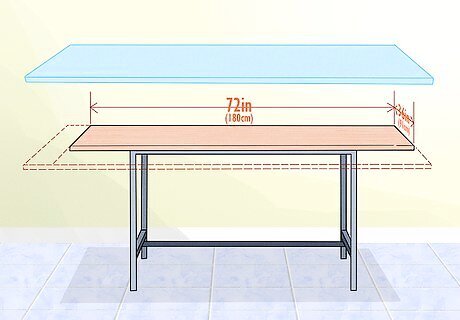
Get a plywood board matching the dimensions you want the table to be. Determine how much more space you need for the table. Go to the hardware store and pick up a piece of plywood that matches the dimensions that you want your tabletop to be. In general, the table will remain stable if you get a board that's up to 24 in (61 cm) longer and 12 in (30 cm) wider than the tabletop. You can add less than that, but adding up to 12 in (30 cm) on each side of the table length and 6 in (15 cm) to each side of the width will be stable. The hardware store can cut the wood to your dimensions. If your tabletop is 72 in (180 cm) x 36 in (91 cm) and you want to make it 10 in (25 cm) longer and 8 in (20 cm) wider, get a piece of plywood that’s 82 in (210 cm) x 44 in (110 cm). You could extend the table further if you have to, but you’ll have to add legs to the plywood to support it.
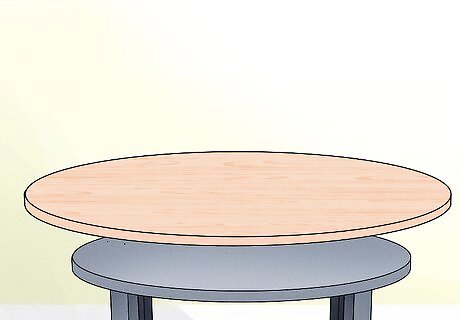
Cut the plywood to an oval shape if your table is round. You can still use this trick if your table is oval or circular. Lay the wood on a workbench or table. Use a jigsaw and cut the corners off the plywood to round out each side. Then sand the edges to smooth them out. Always wear gloves and goggles while you're using a saw. If you're working inside, put a sheet or drop cloth down to catch any sawdust. You could try to find a rounded or oval piece of plywood instead of a rectangular one. This saves you the cutting.
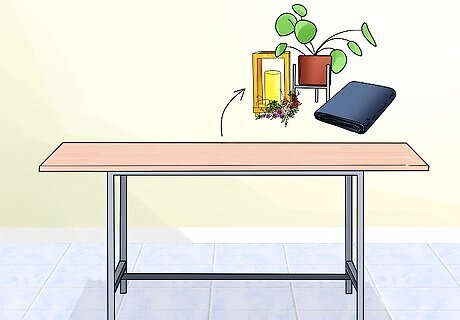
Clear your table. Take off the tablecloth, centerpieces, placemats, candles, and everything else so the tabletop is free. Also pull any chairs back so you have plenty of room to work.
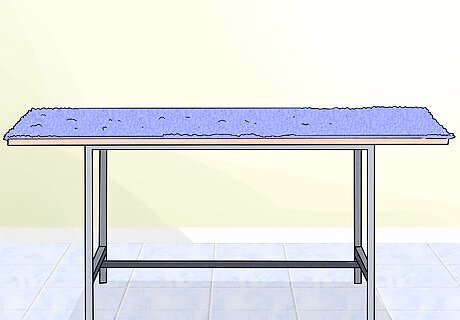
Lay a rug mat on the tabletop. Get a rug mat that matches the dimensions of the tabletop. Roll it out and center it on the table. This keeps the plywood in place and prevents it from slipping. The rug mat also protects the original tabletop, so you don’t have to worry about damaging it.

Center the piece of plywood over the table. Lift the plywood and hover it over the table. Adjust it so it’s centered, then gently lower it onto the tabletop. Check around the plywood to make sure it’s even on all sides of the table. You could do this alone but it’ll be a lot easier with a partner. Test the plywood to make sure it’s stable. Make sure it doesn’t slide from side to side and can handle plates and dishes on it without tipping. If the tabletop isn't stable, it might not be fully centered. Readjust it to see if that helps. If not, the plywood might be too large for the table, and you'll have to attach legs to the corners.
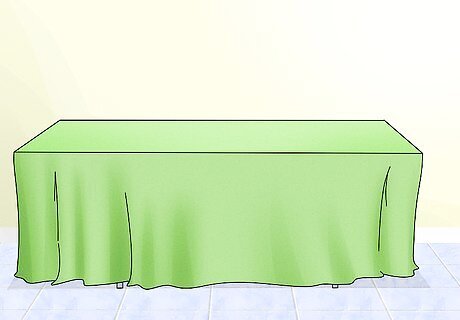
Put a tablecloth over the plywood to hide it. Just lay out your favorite tablecloth over the tabletop and adjust it so it’s even. No one will be able to tell that there’s a piece of plywood under there! Some other decorations like a runner, candles, or centerpiece can also help hide the plywood underneath the tablecloth.
Pushing Tables Together
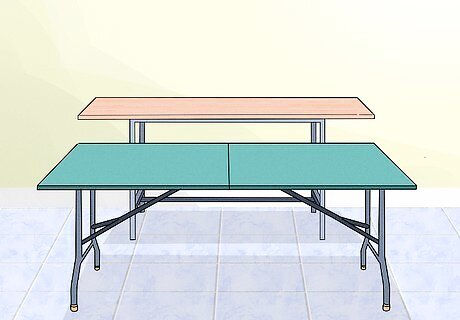
Get a folding table that matches the width and height of the main table. This is a good, simple fix to extend your table even more. All you need is a folding table. Measure the dimensions of the original tabletop and get a folding table that matches the height and width. The length of the table is less important and it depends on the amount of space you need. If you can’t find a table that’s the right width, you could use the same plywood trick from part 1 to make it match the original table.
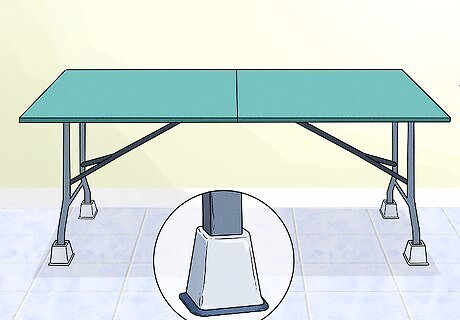
Use table risers if the two tables aren't the same height. Don't worry if you can't get a folding table that matches your table height. Just use table risers to raise it up to the right height. Pile risers under each leg of the folding table until it matches the original table height.
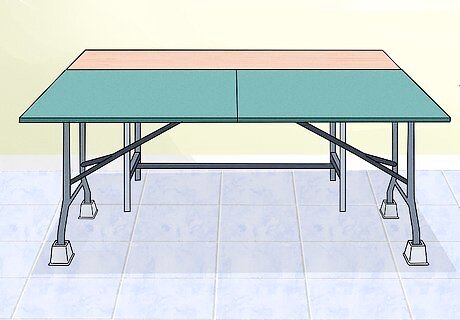
Align the 2 tables so the tabletops are flush. Open the folding table and stand it next to the original table. Slide the folding table so the edges of both tables are even. If you’re using table risers, prop up the folding table first and then align it with the original table.
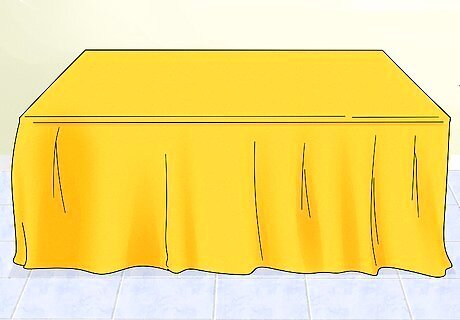
Cover the tables with a long tablecloth. Roll out the cloth and adjust it so it sits evenly across both tables. No one will be able to tell that there are actually two tables under there! If you don’t have a tablecloth that’s long enough, you can use more than one. This will look fine too.



















Comments
0 comment